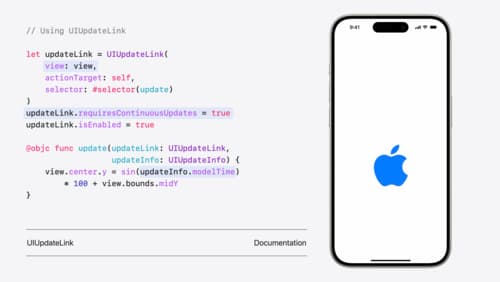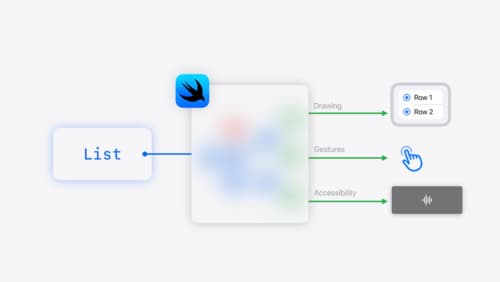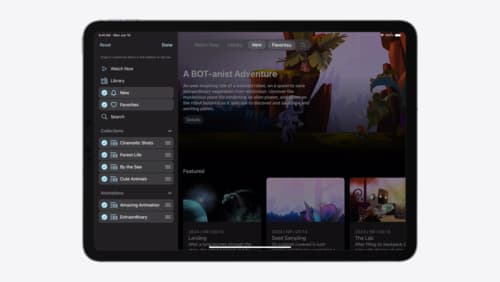Swiftui update in ios 17
Asked on 2024-10-03
1 search
In iOS 17, SwiftUI has received several updates and enhancements. Here are some of the key updates:
-
State-Driven Views: SwiftUI continues to emphasize state-driven views, which automatically update the UI when the view state changes. This helps eliminate boilerplate code and update bugs. SwiftUI maintains a representation of the user interface behind the scenes, updating its outputs as data changes.
-
Animations: SwiftUI builds on data-driven updates to provide animations. You can wrap state changes with animations, and SwiftUI will apply default or custom transitions. This allows for smooth and customizable animations in your app.
-
Graphics Capabilities: New graphics capabilities include a mix modifier on colors, allowing you to blend colors by a given amount. Custom shaders can now be precompiled to avoid frame drops caused by lazy shader compilation.
-
Scroll View Enhancements: There are new APIs for scroll views, providing fine-grained control over their state. You can react to changes in content offsets, content size, and more, enabling features like auto-playing videos when a view's visibility changes due to scrolling.
-
Interoperability with UIKit: SwiftUI and UIKit interoperability has been enhanced, making it easier to use them interchangeably. You can now use SwiftUI animation types to animate UIKit views, and gesture recognition has been factored out of UIKit for use in SwiftUI view hierarchies.
For more detailed information, you can refer to the session What’s new in SwiftUI (16:18) which covers scrolling enhancements and other updates.

What’s new in UIKit
Explore everything new in UIKit, including tab and document launch experiences, transitions, and text and input changes. We’ll also discuss better-than-ever interoperability between UIKit and SwiftUI animations and gestures, as well as general improvements throughout UIKit.

SwiftUI essentials
Join us on a tour of SwiftUI, Apple’s declarative user interface framework. Learn essential concepts for building apps in SwiftUI, like views, state variables, and layout. Discover the breadth of APIs for building fully featured experiences and crafting unique custom components. Whether you’re brand new to SwiftUI or an experienced developer, you’ll learn how to take advantage of what SwiftUI has to offer when building great apps.

Elevate your tab and sidebar experience in iPadOS
iPadOS 18 introduces a new navigation system that gives people the flexibility to choose between using a tab bar or sidebar. The newly redesigned tab bar provides more space for content and other functionality. Learn how to use SwiftUI and UIKit to enable customization features – like adding, removing and reordering tabs – to enable a more personal touch in your app.
